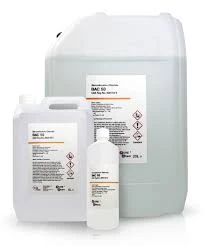Properties and Applications of Anionic Polyacrylamide in Water Treatment Processes
Understanding Anionic Polyacrylamide Flocculants An Overview
Anionic polyacrylamide (APAM) is a type of water-soluble polymer that has gained significant attention for its flocculating properties in various industrial applications. As an anionic flocculant, it carries a negative charge, which makes it effective in aggregating particles suspended in water. This article delves into the nature of anionic polyacrylamide, its mechanisms of action, applications, and benefits.
The Chemical Composition and Structure
Anionic polyacrylamide is synthesized through the polymerization of acrylamide monomers, in which a certain percentage of the acrylamide is replaced with anionic groups, typically through the incorporation of anionic monomers such as acrylic acid or sodium acrylate. The molecular weight of APAM can vary significantly, with higher molecular weights generally offering better performance in flocculation due to an increased ability to bridge particles.
Mechanism of Action
The flocculation mechanism of APAM involves several stages. When added to a suspension, the anionic chains of polyacrylamide interact with positively charged sites on the surface of particles. This interaction leads to the formation of a bridge between particles, enhancing the aggregation of suspended materials. The efficiency of APAM as a flocculant is influenced by factors such as ionic strength, pH levels, and the characteristics of the particles present in the water.
Applications
Anionic polyacrylamide is widely utilized across various industries due to its versatility and effectiveness
1. Water Treatment APAM is extensively applied in water treatment processes, helping to clarify water by removing solids, colloids, and organic matter. It is particularly useful in municipal wastewater treatment and industrial effluent management.
2. Mining and Mineral Processing In the mining industry, APAM is used for the clarification of tailing solutions and the recovery of valuable minerals. Its ability to enhance settling rates in mineral slurries makes it valuable for extracting ores.
anionic polyacrylamide flocculant

4. Agricultural Applications Anionic polyacrylamide is used in agriculture to enhance soil moisture retention, control erosion, and improve water infiltration rates in irrigation practices.
5. Oil Recovery In enhanced oil recovery processes, APAM helps increase the viscosity of the aqueous phase, thereby improving oil extraction efficiency.
Benefits of Anionic Polyacrylamide
The use of anionic polyacrylamide offers several benefits
- Improved Flocculation APAM’s ability to promote the aggregation of fine particles leads to effective sedimentation and clarification processes.
- Cost-Effectiveness By enhancing the efficiency of various processes, APAM can lead to substantial cost savings in operations such as water treatment and mineral processing.
- Environmental Benefits APAM is considered a more environmentally friendly option compared to traditional coagulants, such as aluminum sulfate, as it minimizes the formation of hazardous sludge.
- Versatility Its applications range from industrial to agricultural use, making it a valuable product for various sectors.
Conclusion
In conclusion, anionic polyacrylamide flocculants play a crucial role in numerous industrial applications due to their effective aggregation properties and versatility. As industries increasingly seek sustainable and efficient solutions, APAM stands out as a promising agent for water treatment, mining, agriculture, and beyond. The continued research and development of this polymer are likely to yield even more innovative applications, aligning with the growing focus on environmental sustainability and operational efficiency.
-
Premium Isothiazolinones | Broad-Spectrum Biocidal SolutionsNewsAug.28,2025
-
LK-319 Special Scale And Corrosion Inhibitor For Steel Plants: Advanced Solutions for Industrial Water SystemsNewsAug.22,2025
-
Flocculant Water Treatment: Essential Chemical Solutions for Purification ProcessesNewsAug.22,2025
-
Isothiazolinones: Versatile Microbial Control Agents for Industrial and Consumer ApplicationsNewsAug.22,2025
-
Scale Inhibitor: Key Solutions for Water System Scale PreventionNewsAug.22,2025
-
Organophosphonates: Versatile Scale Inhibitors for Industrial Water SystemsNewsAug.22,2025





